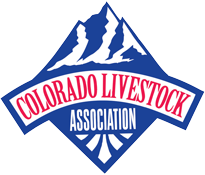As we continue to see excessive heat across the country, the Livestock Indemnity Program (LIP) is a useful tool for cattle producers. Please do not hesitate to reach out if your producers need assistance as they navigate this adverse weather. NCBA will continue to monitor the ongoing situation and will stay in contact with congressional offices as well as the relevant agencies to make sure that assistance is provided. Attached is a helpful fact sheet, and below is a quick breakdown of the salient points:
Eligible Livestock Owners for LIP:
- A livestock owner must have legally owned the livestock on the day the livestock died and/or were injured by an eligible loss condition,
- An owner’s livestock must have either:
- Died in excess of normal mortality as a direct result of an eligible loss condition,
- Or been injured as a direct result of an eligible loss condition and were sold at a reduced price.
Eligible Loss Conditions: Includes any of the following that occur in the calendar year for which benefits are requested:
- Eligible adverse weather event; Eligible adverse weather event means extreme or abnormal damaging weather that is not expected to occur during the loss period for which it occurred, which directly results in eligible livestock losses. An eligible adverse weather event must occur in the calendar year for which benefits are requested. Eligible adverse weather events include, but are not limited to, as determined by the FSA Deputy Administrator of Farm Programs or designee, earthquake; hail; lightning; tornado; tropical storm; typhoon; vog, if directly related to a volcanic eruption; winter storm, if the winter storm lasts for three consecutive days and is accompanied by high winds, freezing rain or sleet, heavy snowfall and extremely cold temperatures; hurricanes; floods; blizzards; wildfires; extreme heat; extreme cold; and straight-line winds. Drought is not an eligible adverse weather event except when associated with anthrax, a condition that occurs because of drought and results in the death of eligible livestock.
- Eligible disease; Eligible disease means a disease that is exacerbated by an eligible adverse weather event that directly results in eligible livestock losses, including, but not limited to, anthrax, cyanobacteria, and larkspur poisoning. In addition, eligible disease means a disease that is caused and/or transmitted by vectors and vaccination or acceptable management practices are not available, whether or not they were or were not implemented, that directly result in death of eligible livestock in excess of normal mortality, including but not limited to Blue Tongue, EHD and CVV.
Payment Limitations and Adjusted Gross Income (AGI): There is no per person or legal entity program year payment limitation. In evaluating average adjusted gross income, an individual or entity is ineligible for payment under LIP if the average AGI of the individual or entity exceeds $900,000.
Applying for LIP:
Owners or contract growers may apply to receive LIP benefits at local FSA offices. Owners or contract growers who suffer livestock losses due to an eligible cause of loss must submit a notice of loss and an application for payment to the local FSA office that serves the physical location county where the livestock losses occurred. All of the owner’s or contract grower’s interest in inventory of eligible livestock in that county for the calendar year must be accounted for and summarized when determining eligibility. An owner or contract grower must file a notice of loss within 30 calendar days of when the loss of livestock is first apparent as well as file an application for payment within 60 calendar days after the end of the calendar year in which the eligible loss condition occurred. For 2021 LIP losses, livestock owners and contract growers may apply for 2021 LIP benefits in the physical location county where the loss occurred.
Livestock Loss Documentation:
Livestock owners and contract growers must record all pertinent information (including the number and kind) of all livestock and those adversely impacted by an eligible loss condition resulting in either death losses or injury and sales of injured livestock at reduced price.
Owners who sold injured livestock for a reduced price because the livestock were injured due to an eligible adverse weather event or eligible attack, must provide verifiable evidence of the reduced sale of the livestock.
The injured livestock must be sold to an independent third party (such as sale barn, slaughter facility, or rendering facility).
Documents that may provide verifiable evidence of livestock sold at a reduced price include but are not limited to: sales receipts from a livestock auction, sale barn or, other similar livestock sale facilities, rendering facility receipts, or processing plant receipts.
The documentation for injured livestock sales must have the price for which the animal was sold as well as information on livestock kind, type, and weight sold.
Source: Allison Rivera, National Cattlemen’s Beef Association
